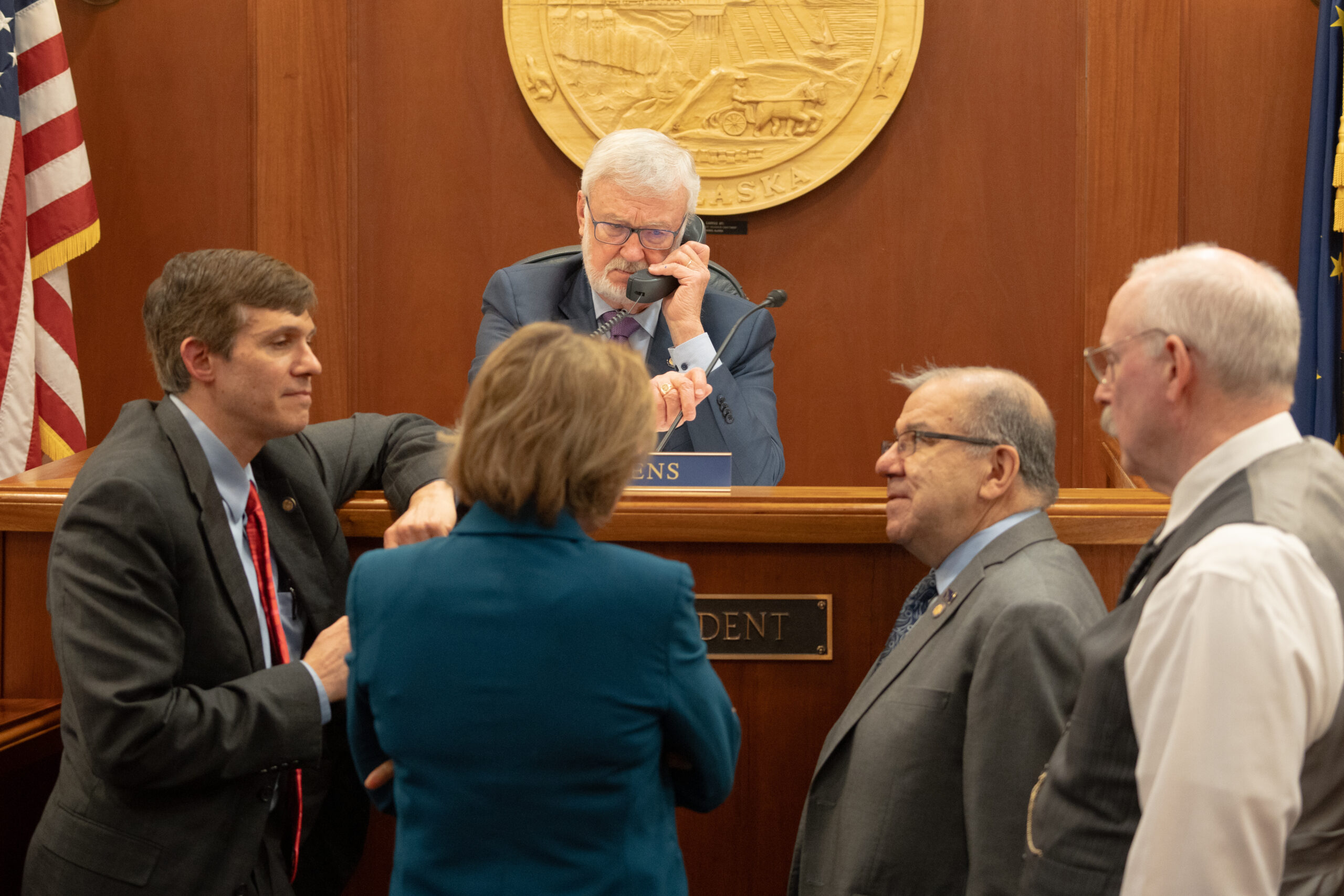
Two high-priority energy bills aimed at boosting Cook Inlet gas production, sequestering carbon dioxide and lowering consumer costs appear headed for final passage in the Alaska Legislature. Both bills were initially proposed by Gov. Mike Dunleavy and now contain a number of other proposals.
In the House, legislators greenlit a bill aimed at making it cheaper to transmit power around various communities on the Railbelt. It would also make it easier and cheaper to bring new energy sources on the grid, especially for independent power producers.
Rep. Will Stapp, R-Fairbanks, said it’s all about lowering energy costs.
“The unified transmission organization, the RTO [Railbelt Transmission Organization], is really the first step in saying, OK, let’s take a holistic look at how we can move up and down the entire Railbelt system, the cheapest electron, right, from Homer to Fairbanks, or from Fairbanks to Homer and everywhere in between, and then let’s look at where we can deploy new forms of generation,” Stapp said.
The bill would also prevent utilities from passing on the cost of building natural gas import terminals to customers through rates. It’s due for a Senate Finance Committee hearing Wednesday and is likely headed for the governor’s desk after a final Senate vote.
Meanwhile, the Senate passed a bill that would allow companies to inject carbon dioxide into underground reservoirs. Sen. Bert Stedman, R-Sitka, who presented the bill on the Senate floor, said it could be a boon for the state.
“Carbon capture, utilization and storage is an expanding industry that companies are beginning to commit billions of dollars to invest in,” Stedman said. “SB 50 will allow Alaska to take part in that.”
Stedman said the Senate Finance Committee had scrutinized the bill to ensure it would not wind up costing the state money through tax credits — and Stedman said the use of carbon dioxide injection for so-called “enhanced oil recovery” had the potential to boost state oil revenue.
The bill also includes several provisions aimed at addressing the looming gas supply crunch. One would regulate the price of natural gas storage. Another would set up a reserve-based lending program within the Alaska Industrial Development and Export Authority. That would provide state loans to small drillers in Cook Inlet who have been unable to find investors.
Earlier this year, Texas-based BlueCrest Energy said it was interested in drilling an offshore gas well to access a gas deposit in the Cosmopolitan Unit estimated to contain more than four years’ worth of current Southcentral gas demand. Sen. Bill Wielechowski, D-Anchorage, said the program could help keep Alaskans’ energy costs down.
“That provision alone could unlock over 300 billion cubic feet of gas in one field, we think, which solves our problem in Cook Inlet for the next decade,” Wielechowski said. “There’s more to be done. And I think the icing on top is that the money that we may get from this that we hope to get will go into the Permanent Fund and grow people’s dividends.”
The carbon storage bill also seeks to expand geothermal energy by easing some rules and setting up a new licensing system. Dunleavy offered support for the carbon storage bill package in a statement from his press office.
Senators also passed a separate bill Tuesday setting up a “green bank” within the Alaska Housing Finance Corporation that would finance renewable energy projects. The green bank was added as an amendment to a House bill that removes a lending cap on AHFC home loans. It would need a final vote in the House to head to the governor. Dunleavy backed the green bank concept in another bill.
Eric Stone covers state government, tracking the Alaska Legislature, state policy and its impact on all Alaskans. Reach him at estone@alaskapublic.org and follow him on X at @eriwinsto. Read more about Eric here.





